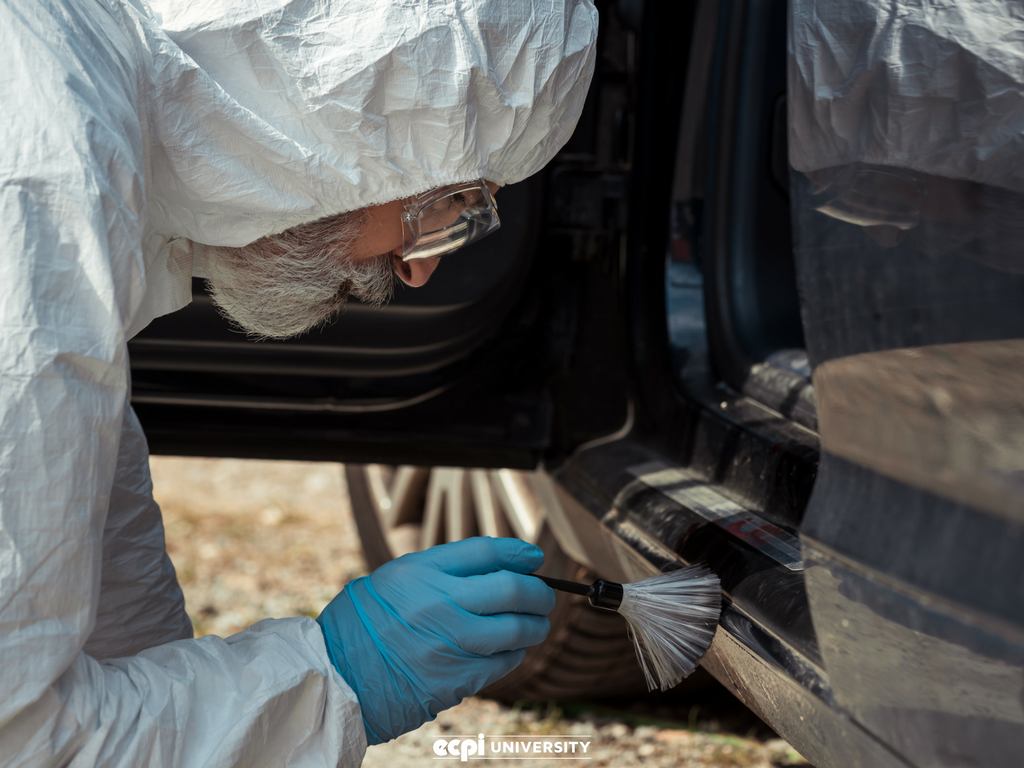What is the Job of a Crime Scene Analyst?
Crime analysts assist the police in organizing their personnel and resources to cut down on crime by detaining suspects more efficiently. They do so by reviewing police reports to identify unique patterns of criminal activities. For instance, in case a burglar targets drug stores in a certain neighborhood, a crime analyst will use the available information to predict the time, place and day the next incident will happen. According to the International Association of Crime Analysts (IACA), crime scene analysis provides answers on who, what, when, where, why and how a crime happened.
What Goes on During a Crime Scene Analysis?
Crime scene analysts are either employed by the local, federal, or state government. When working as a crime scene analyst, you will discover that there are no two similar cases. Crime scenes are different, and you may have to be on-call for long periods, and this means that you’ll never be bored. Although crime scenes are different, the procedure for analyzing and preserving evidence is similar. The following steps help crime scene analysts to meet the needs of different crime situations.
Setting up a perimeter: While the police are the first responders to a crime scene, they often act as security guarding where they believe the actual crime happened until crime scene analysts and other personnel arrive. Your job will be to mark off and document the affected area.
Plan and conduct a primary survey of the scene: You will also conduct an initial survey of the scene by taking photographs and notes of potentially valuable evidence. You will document the crime scene by recording conditions such as the position of doors, movable furniture, whether the lights were on or off, any unusual smells, and the temperature of the scene.
Documenting, recording and collecting evidence: Some of the common evidence that you will collect include fingerprints, DNA samples such as blood spatter and hair, footprints, tire tracks and even sounds in the area.
Conduct a secondary survey: To ensure that you have thoroughly searched the entire crime scene, you will have to conduct a second survey as a quality control step.
Preserve the evidence: Ensure that all the evidence is accounted for by creating an inventory log. Everything you record in the descriptions should match photos taken during the accident scene. For example, in case you collect a gun in a crime scene, the serial number in the inventory log should match the serial number in the photo taken at the scene. The paper trail ensures that the evidence isn’t damaged and it also establishes a chain of custody that is used throughout the life cycle of the case.
Technology Advancement in Crime Scene Analysis and its Benefits
Technology advancement has been a mixed blessing in law enforcement industries, for instance, the use of the Internet. On one hand, law enforcement agencies use social media to trail suspects, but gangs and terrorists use it to coordinate their activities. While this makes it difficult to keep the public safe, with proper knowledge and the right tools, law enforcement agencies can use this channel of communication against suspected criminal offenders.
The rapid expansion of technology has also helped in the innovation of tools that can help crime scene analysts to serve their communities by assisting in the capture and detention of criminals. Some of these forms of technological advancements include:
3D Crime Scene Imaging
Crime scene analysts use different tactics to dissect every aspect of crime scenes. However, 3D scanning technology makes work easier. By taking a three-dimensional scan of a crime scene, these devices replace the need for taking photographs and drawing sketches.
GDS (Gunshot Detection System)
These are system fitted with electronic sensors that are installed in high crime areas. These systems help the police and crime scene analysts to determine the location where gunshots came from. This helps in improved response and solving cases.
Automatic License Plate Recognition
Law enforcement vehicles are now equipped with cameras that can automatically run license plates. This helps to determine if a car is stolen or if there is a warrant for the arrest of the driver.
Why is Formal Education Important in this Field?
To become a crime analyst, you should first complete a bachelor’s degree with an emphasis on criminal justice. After getting hired, you’ll have to complete professional training which includes classes in firearms, ethics and first aid. Law enforcement agencies often hire civilians that have completed the desired level of education. This can be a certificate or associate’s degree, but most agencies often hire applicants with a minimum of a bachelor’s degree.
Are you interested in the field of crime analysis? If you would like to earn a Bachelor of Science in Criminal Justice with a concentration in Crime Intelligence Analysis, ECPI University offers this course at an accelerated rate. For more information about this program, connect with a friendly admissions advisor today.
It could be the Best Decision You Ever Make!
DISCLAIMER – ECPI University makes no claim, warranty, or guarantee as to actual employability or earning potential to current, past or future students or graduates of any educational program we offer. The ECPI University website is published for informational purposes only. Every effort is made to ensure the accuracy of information contained on the ECPI.edu domain; however, no warranty of accuracy is made. No contractual rights, either expressed or implied, are created by its content.
Gainful Employment Information – Crime & Intelligence Analysis - Bachelor's
For more information about ECPI University or any of our programs click here: http://www.ecpi.edu/ or http://ow.ly/Ca1ya.





